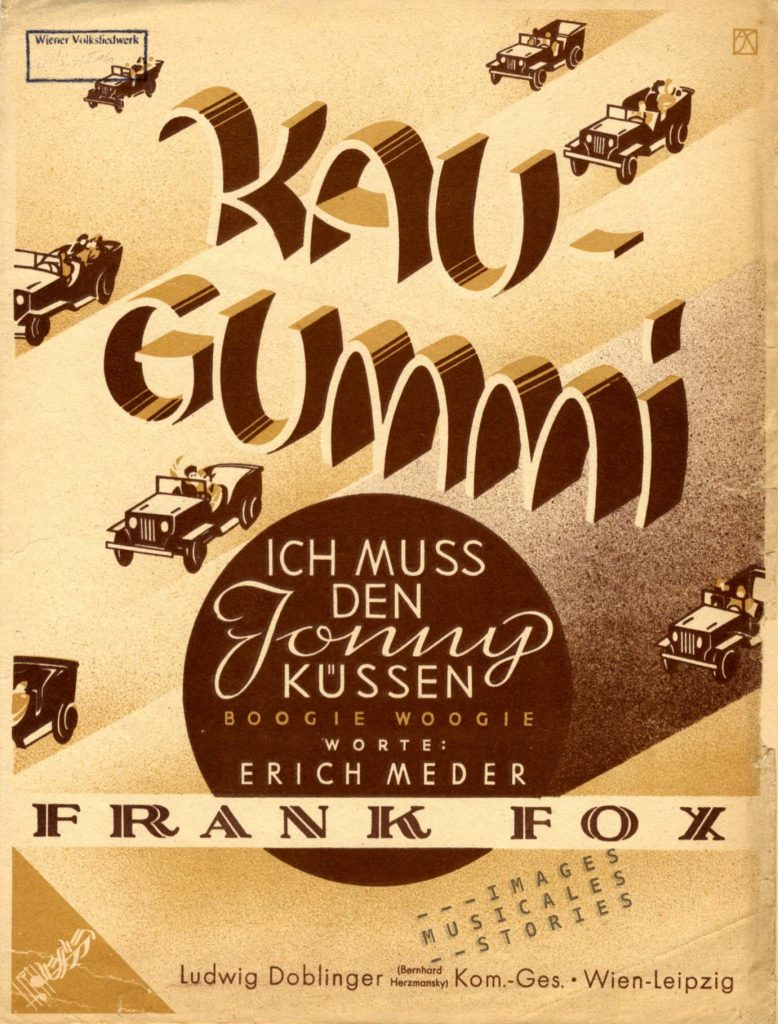
Before WWII chewing gum wasn’t common in Europe. The liberation changed that: GIs came with their jeeps and Coca-Cola, offering cigarettes and gum, and thus introduced us to the American way of life. Chewing gum was here to stay.
Although archaeologists have found evidence that the ancient Greeks, the Mayans, and the Aztecs all chewed sticky substances, the mass production of chewing gum happened but around the middle of the 19th century. In 1848, the Curtis family of Maine —inspired by the spruce resin gums enjoyed by Native Americans and by early American pioneers— started to sell the world’s first commercial chewing gum, the State of Maine Pure Spruce Gum. They later changed the recipe to a flavoured paraffin wax gum. In 1852 the family founded the Curtis & Son Company, the nation’s first chewing gum factory with 200 employees. The gum became a success, however, the family never patented any recipe…
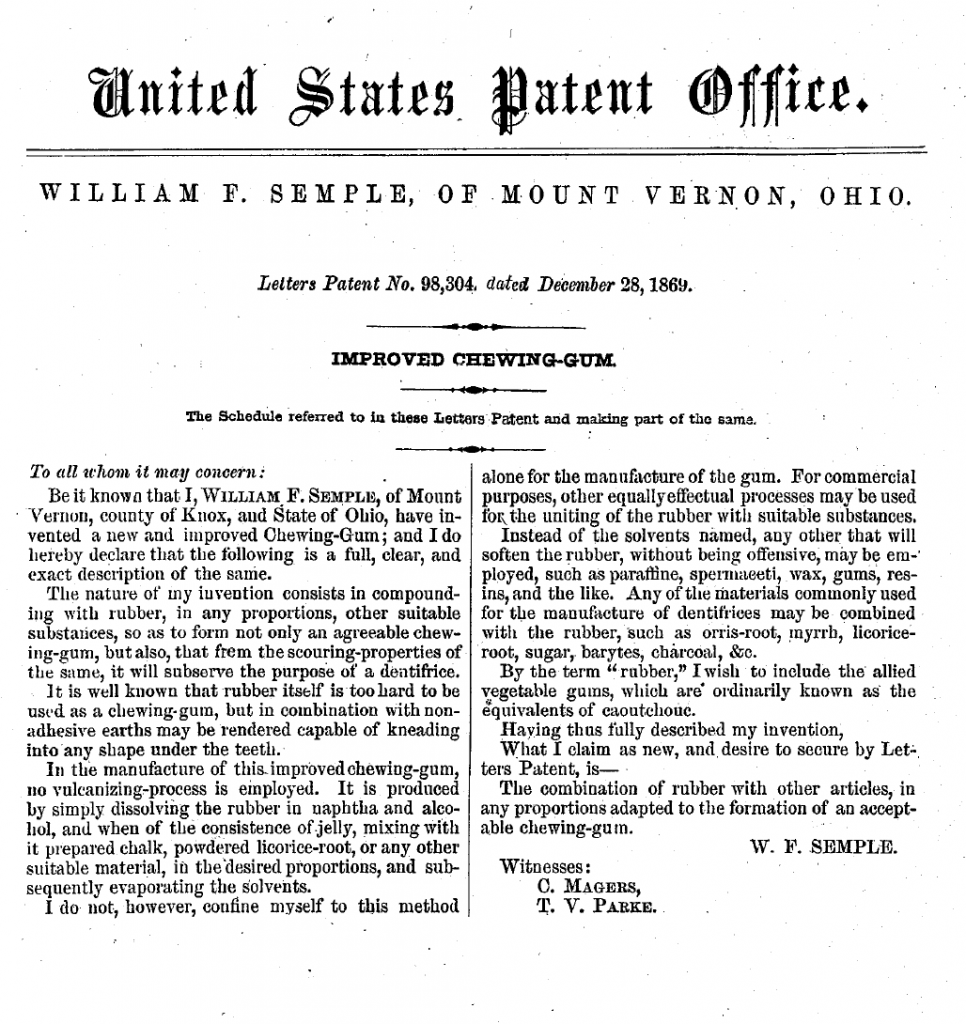
The first patent for chewing gum was granted to a dentist: William Semple of Mount Vernon in 1869. But instead of using resin or paraffin his gum was a mixture of rubber, chalk, powdered liquorice and charcoal, yuck! It was supposed to clean the teeth and strengthen the chewer’s jaw. William Semple did not market his invention very well though, and this left the door open for other players…
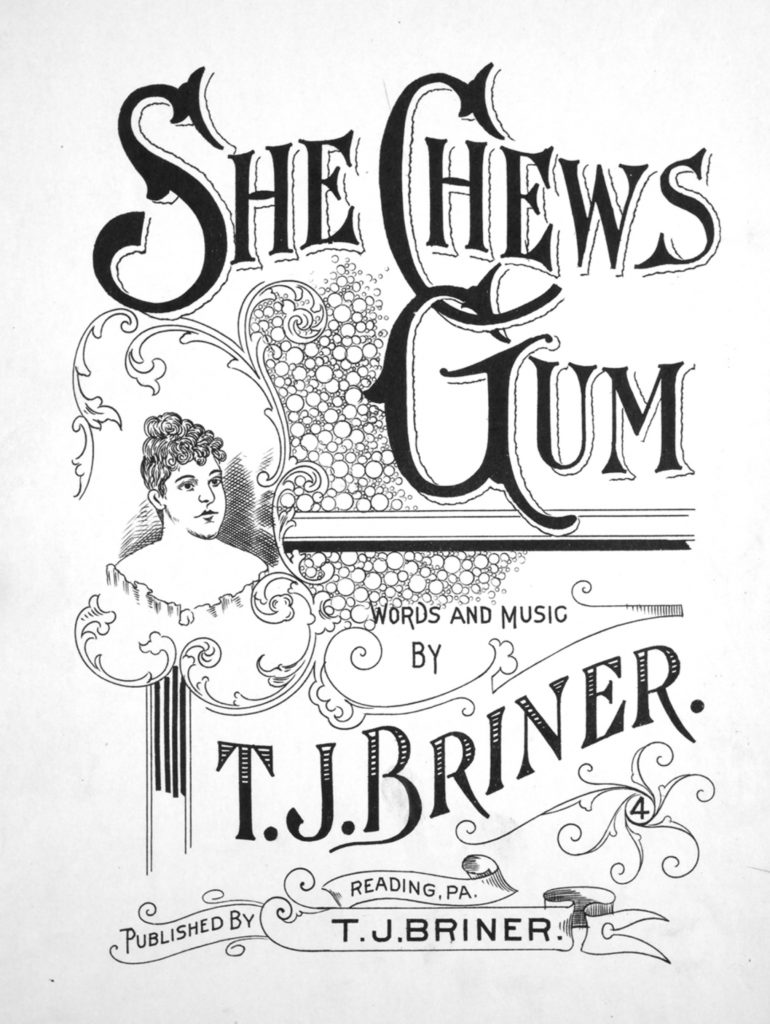
In the late 1850s the New Yorker Thomas Adams, a photographer and inventor, met General Santa Anna, the former Mexican president of the-Alamo-massacre fame, who lived in exile in Staten Island. Santa Anna had brought with him a shipment of chicle. Chicle is a natural gum from the sapadillo tree native to Middle America and the Caribbean.
This unlikely business duo, Thomas Adams and General Santa Anna, at first weren’t focused on gum. They intended to sell the chicle to rubber manufacturers as a cheap substitute for making carriage tires. This getting-rich-quickly scheme never took off because all their vulcanising experiments failed, and Santa Anna left the partnership. Adams though stuck with the chicle and it would make him very rich indeed. Noticing chicle’s resilience and elasticity he discovered the method to turn it into flavourless chewing gum. In 1871 he patented this process and christened the product Adam’s New York Chewing Gum, Snapping and Stretching.
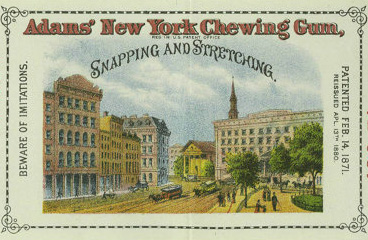
A few years later he flavoured the chicle with liquorice and sold the gooey concoction as Black Jack gum. It was the first gum to be offered in sticks, and it quickly became the public’s favourite. In 1888 he established a large factory and built the first vending machine in the US, selling tutti-frutti flavoured gum on New York subway platforms.

In 1899 Thomas Adams became the first chairman of the American Chicle Company, which brings us to the why of this post. I found an old album with collectable cards in the attic. This album was published as a promotion during the Twenties by a Belgian agent of the American Chicle Company. Ever curious I decided to explore the matter…

The American Chicle Company was an amalgamation of Adams’ and other chewing gum giants. One of them was a Cleveland company, Beeman Chemical, established by pepsin manufacturer Dr. Edwin Beeman in 1887. He was a physician who discovered that pepsin, an extract from the stomach of freshly butchered hogs, provided relief from indigestion. Pepsin is an enzyme found naturally in the stomach that breaks down proteins. At first Beeman attempted to sell powdered pepsin in a bottle, but that failed. He then started to manufacture pepsin-flavoured chewing gum. It became a huge success, but only after he changed the picture of a pig on the wrapper by his own bearded face.
In Everybody’s Song, Susie chews some pepsin gum in order not to ‘be woozy‘.
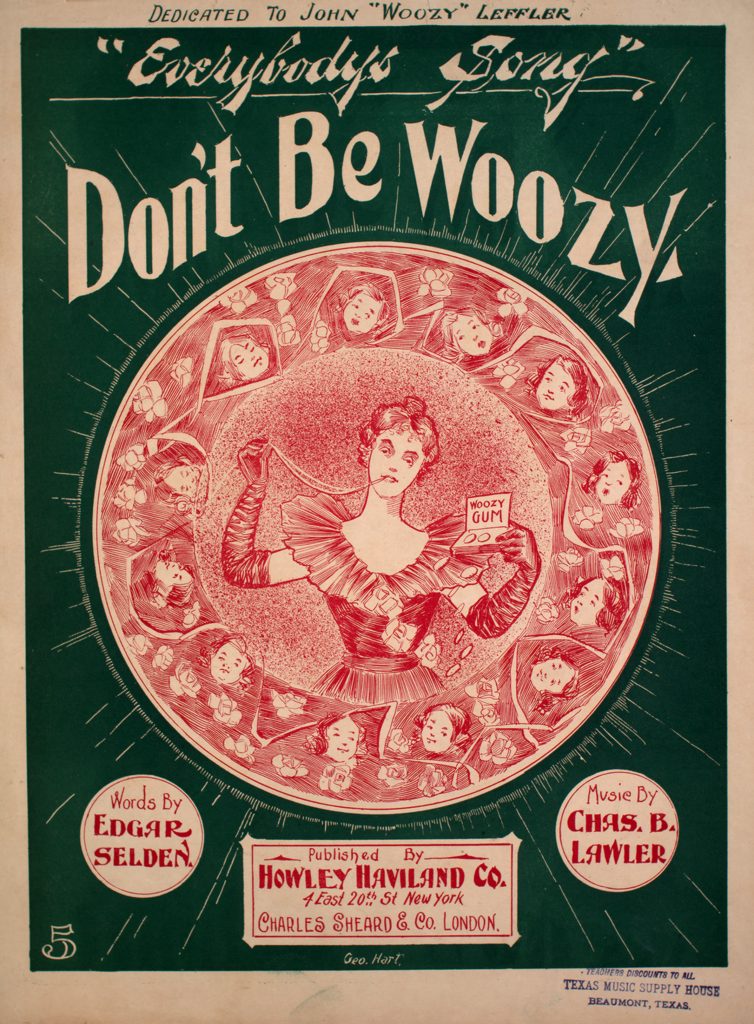
But it wasn’t until a travelling salesman, named William Wrigley junior, got into the business, that chewing gum became a national pastime. He was a genius when it came to marketing. He started as a soap salesman for his father’s company. In 1891 he offered baking powder as a premium with each box of soap. In 1892 he started selling baking powder as a sideline, this time offering chewing gum as a premium. And again the premium proved more popular than the base product. He dropped both soap and baking powder, and concentrated on manufacturing and selling chewing gum.
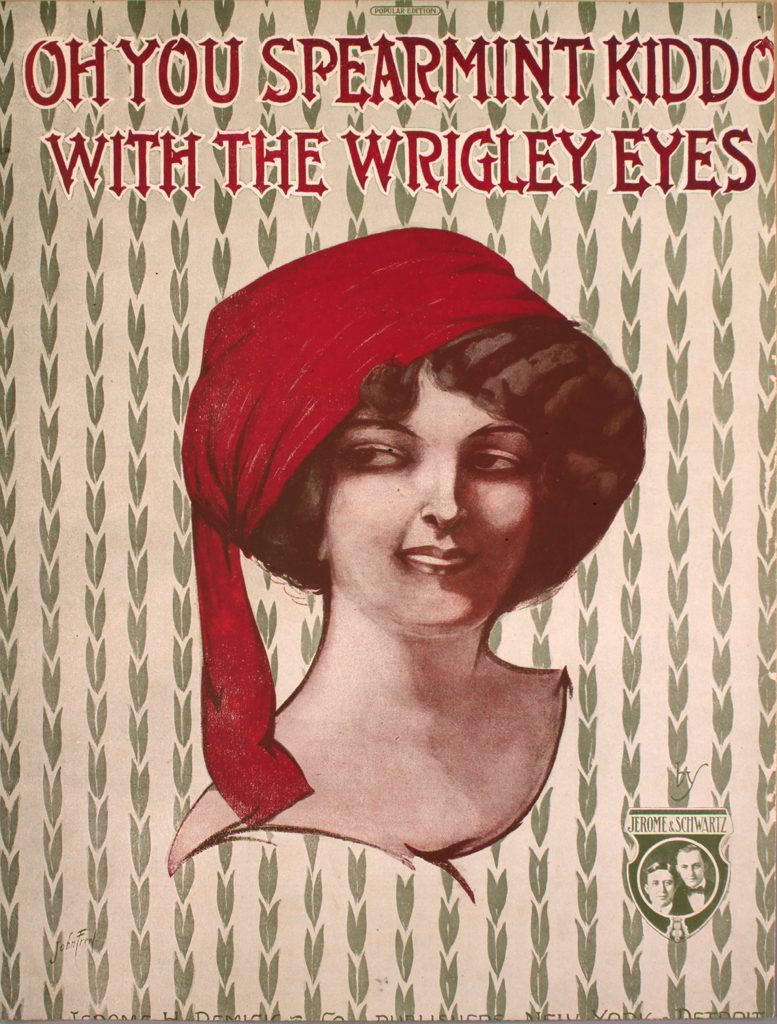
In 1893 Wrigley started selling two of the most popular gums in history Juicy Fruit and Wrigley’s Spearmint Gum, and it made his fortune. In the song Oh You Spearmint Kiddo With the Wrigley Eyes, the names of the three gum giants, Adams, Beeman and Wrigley are united in the lyrics
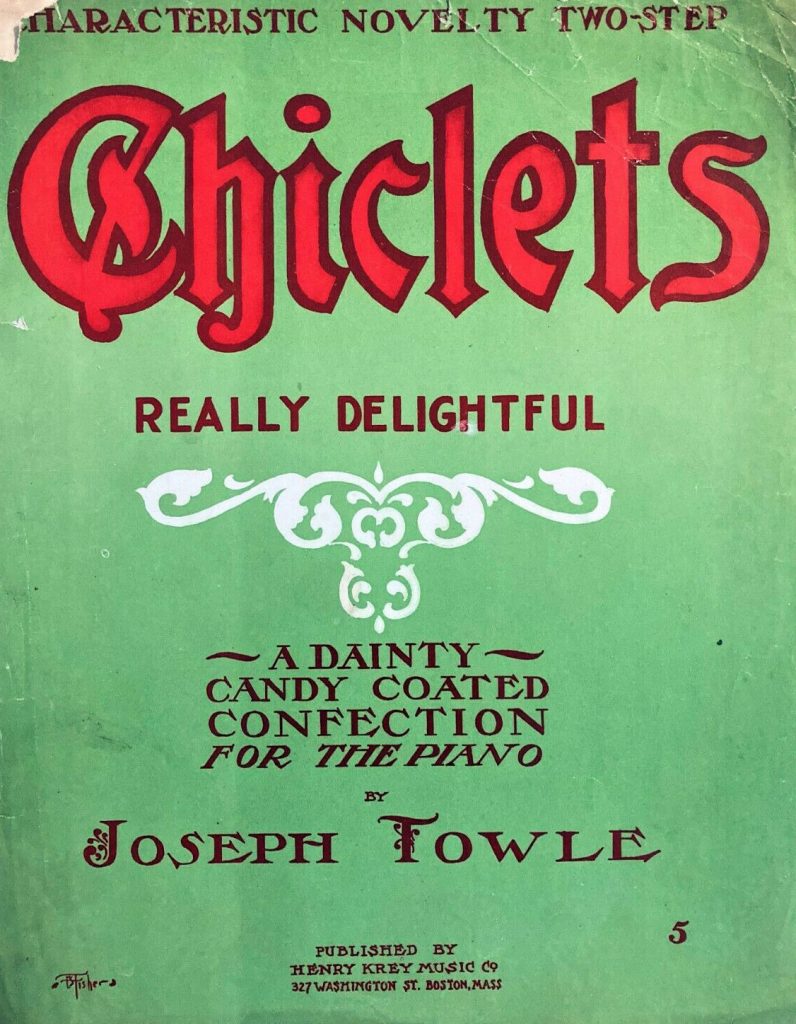
Chiclets was an innovation of chewing gum, with a hard sugar coating offered in several flavours and colours. Various people have been credited with inventing Chiclets, and as the above sheet music illustrates, they became popular around 1906.
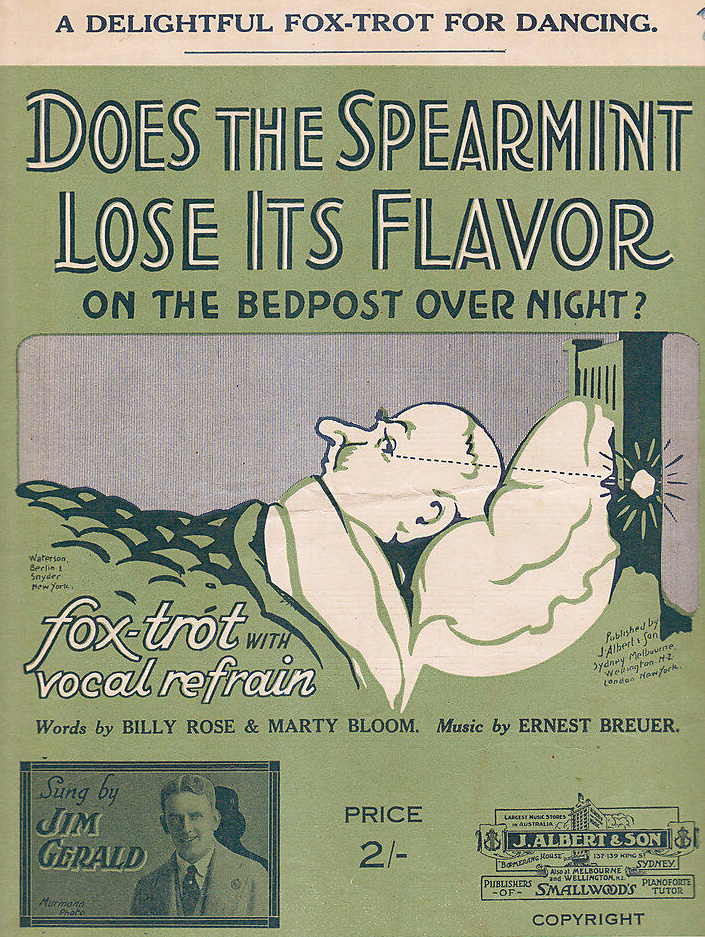
Chu-Chu, a 7-minutes documentary film from around 1920, shows us the production process from chicle to chewing gum. It tells us that every American soldier in World War I received regular rations of gum while they were overseas. During World War II Wrigley supported US troops by taking Spearmint, Doublemint and Juicy Fruit off the civilian market, and dedicating the entire output of these brands to the US Armed Forces. This brings us back to the start of this post, the WWII liberation when the Europeans learned to appreciate chewing gum.


Fantastic post – thanks for the history lesson and a few chuckles!